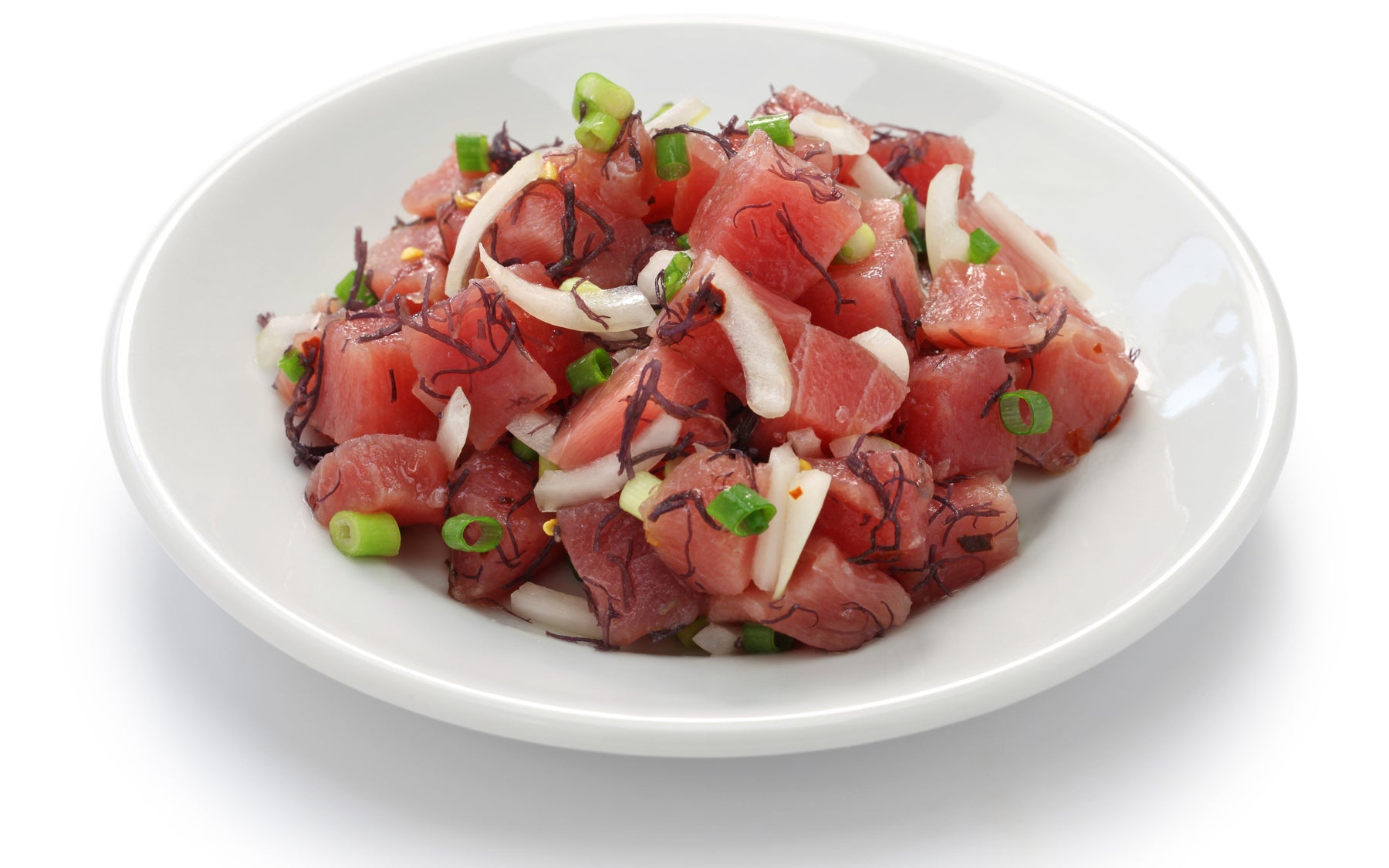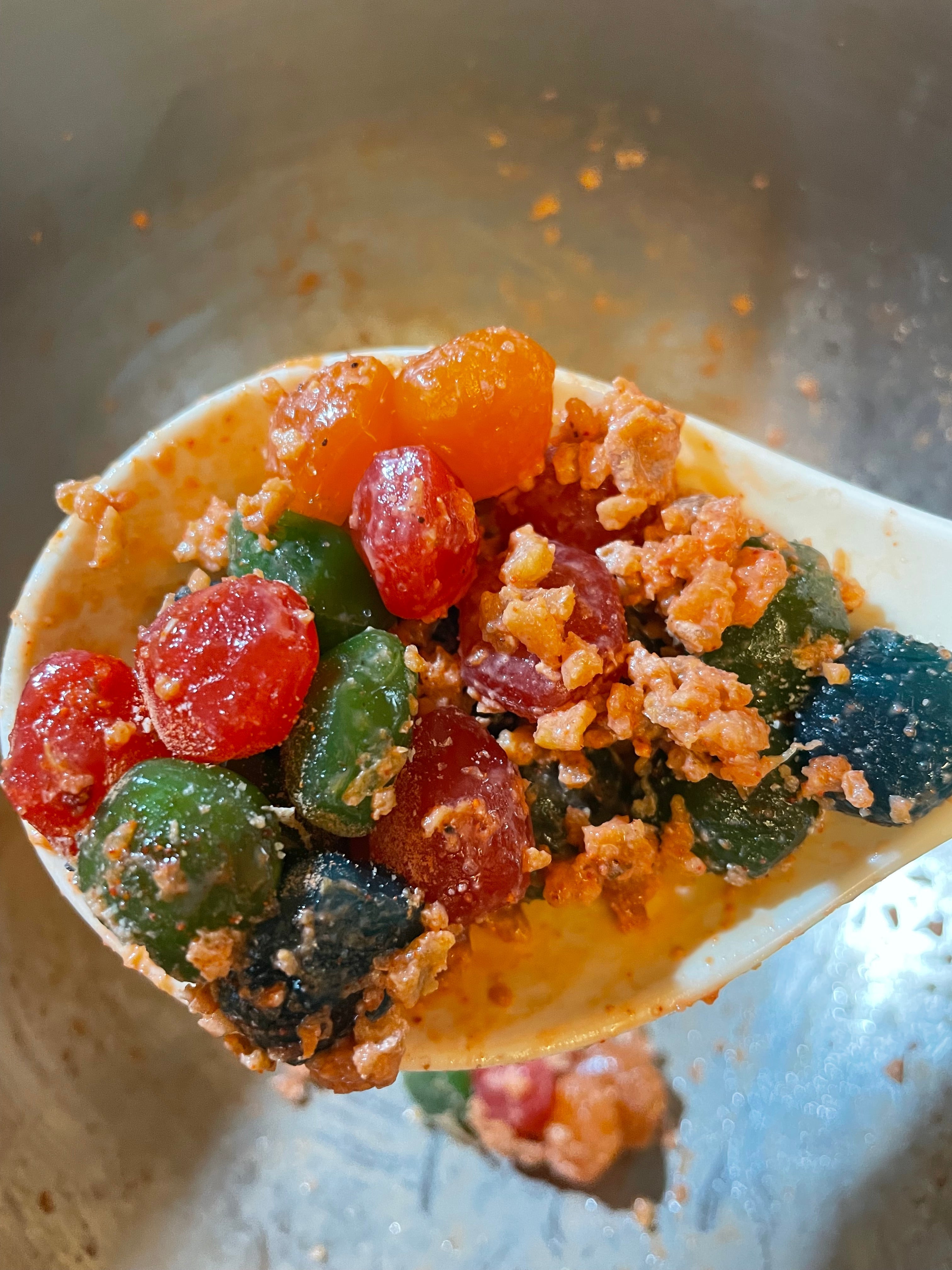
Authentic Hawaiian Style Poke Recipe for a Taste of the Islands

Poke (pronounced poh-keh) is a native Hawaiian dish that means "to slice" or "cut crosswise." It originated from early Polynesian fishermen who would season their raw fish right on the canoe—using sea salt, crushed kukui nuts, and seaweed. Over time, with the influence of Asian immigrants, poke evolved into the flavorful fusion dish we know today.
Quick Fact: Modern poke often includes soy sauce and sesame oil thanks to Japanese and Chinese culinary influence in Hawaii.
What Makes Hawaiian Style Poke Recipe Truly Hawaiian?
Unlike mainland poke bowls that come overloaded with toppings, authentic Hawaiian poke is simple, clean, and all about the fish. This recipe honors that tradition by sticking to local ingredients and time-honored techniques.
Ingredients You’ll Need for limu poke
-
1 lb fresh sashimi-grade ahi tuna (cubed)
-
2 tbsp soy sauce (shoyu)
-
1 tsp sesame oil
-
1 tbsp chopped green onions
-
1 tsp Hawaiian sea salt
-
1 tsp limu (Hawaiian seaweed) or ogo
-
Optional: chili pepper flakes or inamona (roasted kukui nut)
Tip: Always use sashimi-grade fish for safety and flavor. Avoid frozen or previously thawed unless labeled sushi-grade.
How to Make Authentic Poke (Step-by-Step)
-
Cube the Fish: Cut the ahi into even ¾-inch cubes.
-
Season the Fish: In a mixing bowl, gently toss the fish with soy sauce, sesame oil, and sea salt.
-
Add the Freshness: Mix in green onions and limu (or ogo).
-
Let It Marinate: Let it sit for 10–15 minutes to absorb flavors.
-
Serve Immediately: Traditionally eaten as-is or served over warm rice.
Optional Twist: Add a sprinkle of furikake or roasted kukui nut for a nutty, umami boost.
Ahi Tuna: The Star of Hawaiian Poke
Hawaii’s favorite fish for poke is ahi tuna, particularly yellowfin or bigeye. It’s prized for its firm texture and clean, buttery taste.
Local Tip – Where to Eat the Best Poke in Hawaii
If you're visiting Hawaii, try these top local poke spots:
-
Foodland (yes, the grocery store!)
-
Ono Seafood (Honolulu)
-
Tamura’s Fine Wine & Poke
-
Da Hawaiian Poke Company
But if you’re not on the islands, this recipe is the next best thing.
Poke Bowl vs. Traditional Poke
Mainland poke bowls are more like sushi salads. They include avocado, mango, sriracha mayo, edamame, and more. While tasty, these are not traditional Hawaiian-style poke. Keep it simple, keep it fresh, and let the fish shine.
Pair With Classic Hawaiian Snacks
Want to complete the meal? Serve your poke with:
-
Hawaiian mac salad
-
Spam musubi
-
Maui onion chips
-
Fresh pineapple or POG juice
Checkout Snack Hawaii Best Sellers
Want more flavors of the islands?
Browse our full collection of local Hawaiian snacks at Snack Hawaii — from Li Hing Mui treats to crack seed favorites and more.
Or explore our best-selling products loved by locals and visitors alike:

Final Thoughts
This traditional Hawaiian poke recipe celebrates the flavors of the islands without unnecessary frills. Whether you grew up in Hawaii or are simply craving a taste of it, this dish delivers a bite of aloha in every bowl.
FAQs On Hawaiian poke
1. What is traditional Hawaiian poke made of?
Traditional Hawaiian poke typically includes cubed raw ahi tuna, sea salt, inamona (roasted kukui nut), limu (seaweed), and green onions. Modern variations may add soy sauce, sesame oil, and chili flakes.
2. Can I make poke with other types of fish?
Yes! While ahi (yellowfin tuna) is the most popular, you can also use salmon, octopus (tako), or even cooked shrimp for different flavors and textures.
3. Is poke safe to eat raw?
If you're using sushi-grade fish and handling it properly, poke is safe to eat raw. Always keep fish refrigerated and consume it the same day for the best taste and safety.
4. How long can poke stay fresh in the fridge?
Freshly made poke is best eaten within 24 hours, but you can refrigerate it for up to 2 days. After that, the texture and flavor may start to degrade.



Comments
Leave a comment